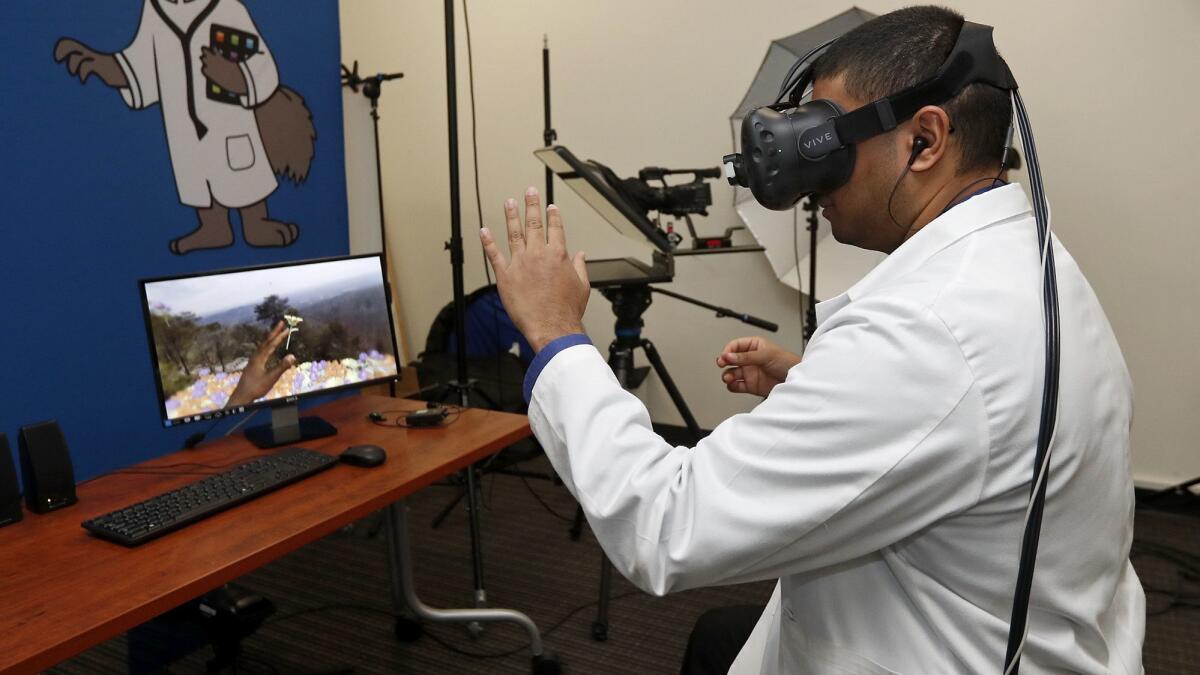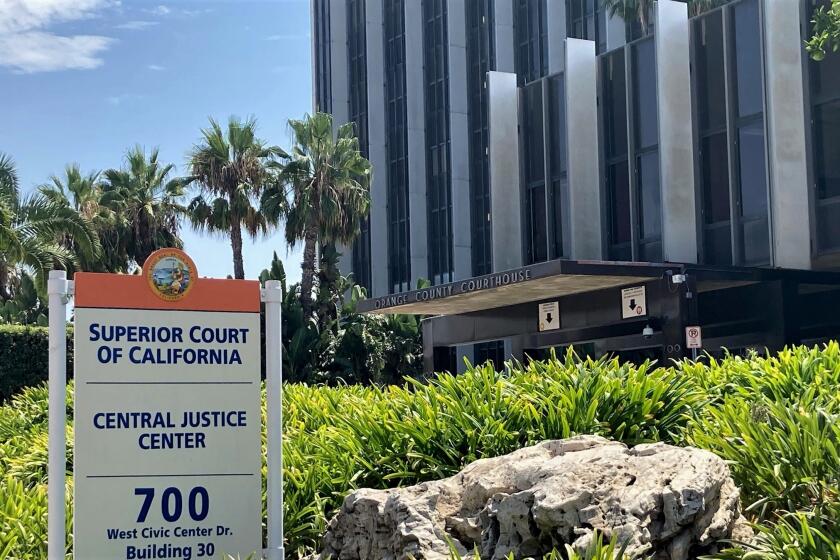Virtual reality puts UC Irvine medical students in the body of a patient

- Share via
UC Irvine medical students are using virtual reality to learn empathy for suffering patients.
The medical school has been utilizing the technology for more than a year as part of its required clinical foundations course.
“We have always wanted our students to put themselves in their patients’ shoes,” said Warren Wiechmann, UC Irvine associate dean of clinical science education. “With this technology you essentially become the patient. Because it is a virtual reality environment, and it is fully immersive, it feels like you are there.”
The department is using three virtual scenarios that focus on Alzheimer’s disease, macular degeneration vision loss and end-of-life discussions.
Those programs were developed by Embodied Labs, a Los Angeles-based virtual reality company. The school developed a fourth scenario where an English-speaking patient tries to get care at a Vietnamese hospital.
Each experience puts the viewer into the body of a patient.
Originally, as part of empathy training for medical students, patients were brought to a classroom where they’d discuss their unique challenges.
Wiechmann said those testimonials are helpful, but the virtual reality programs have opened a new door to developing “soft skills” needed for doctor-patient connection.
“Empathy is one of the core parts of the patient-physician relationship,” Wiechmann said. “As we have started to see more super-computing and artificial intelligence, there are a lot of theories that they will take over certain industries, including medicine. The one thing artificial intelligence and computers can’t do is build a connection with the patient. It seems simple and basic, but it is one of the core parts of building trust as a physician.”
In the macular degeneration scenario, the visual field of the viewer is blocked by a black spot so they can’t see in front of them. The student then goes through a clinic visit, experiencing how that particular affliction affects the patient’s ability to communicate and fill out medical forms.
The Alzheimer’s program attempts to convey the gradual decline of mental processes. It starts with the patient experiencing some forms of dementia, then hallucinations and hearing loss.
Mark Rupasinghe, a third-year medical student, said the experience was eye-opening for him.
“I was in the doctor’s office, and the doctor was telling me stuff but every couple of words, things didn’t make sense,” Rupasinghe said. “It captured the confusion patients may experience. I think it helped me understand. Maybe I can be a little more empathetic and patient when patients aren’t understanding what I am saying.
“I can spend thousands of hours studying from labs, textbooks, but it doesn’t really capture what it is like as a patient going through the experience. You can read all about Alzheimer’s and different diseases, but when you experience it in virtual reality you get a better understanding of what they are going through. You can tailor your practice to help them a lot more.”
The medical school developed its program for students to better understand the plight of Spanish-speaking patients. In the scenario, the viewer is an English-speaking patient in a Vietnamese hospital.
“It gives our students a sense of how language barriers can impact medical care,” Wiechmann said.
The department is currently working on developing other programs, including possibly one depicting what it’s like to be treated after a car accident.
Wiechmann said about 30 medical schools use virtual reality out of about 150 schools nationwide.
“I still think that virtual reality for medical education and healthcare is still in its infancy,” Wiechmann said. “There is still a lot of room to grow, but the early offerings we are seeing is very promising.”
All the latest on Orange County from Orange County.
Get our free TimesOC newsletter.
You may occasionally receive promotional content from the Daily Pilot.






